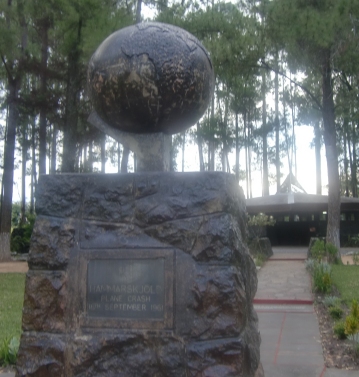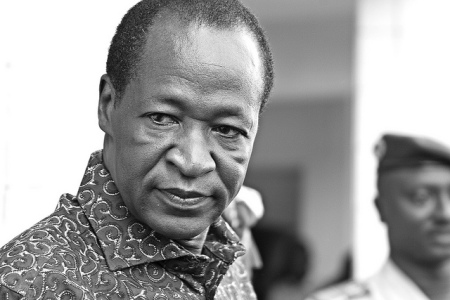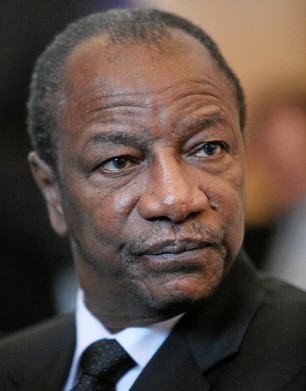The Dag Hammarskjold crash site memorial. Photo by Rui Saraiva Faro
A few kilometres off the main road connecting the northern Zambian cities of Ndola and Kitwe, is a well-kept memorial marking the site where the plane carrying the then UN Secretary General Dag Hammarskjold crashed in 1961. His visit was a peace mission, aimed at brokering a ceasefire in the neighbouring Congo. Among the plaques marking the visits by various dignitaries who came to pay their respects, is one inscribed with the words “On the occasion of the visit of the UN Secretary General H.E. Mr. Kofi Annan, 7 July, 2001”.
But Kofi Annan was never there. The inscription neglects to mention the fact that the actual visit was made by a representative of the former UN Secretary General. In fact, no UN Secretary General has visited the crash site. The current Secretary General, Ban Ki Moon, had his chance in February 2012 when he visited Zambia, but after addressing that country’s parliament in the capital, Lusaka, chose to go south to Zambia’s prime tourist destination, Victoria Falls, instead of going north to visit the crash site.
Clearly, UN Secretary Generals are exceptionally busy, and such a pilgrimage may well be considered unnecessary. But might there also lie somewhere a desire to avoid drawing attention to the uncomfortable possibility that the crash was not an accident, but an assassination? A British-run commission of inquiry concluded that the crash was caused by pilot error, but a UN inquiry did not rule out the possibility of foul play.
Suspicions that the plane was deliberately downed have certainly not gone away. A book released in 2011 (Susan Williams, Who Killed Hammarskjold?), included fresh evidence suggesting it highly likely that this was the case. And now, more than fifty years after the incident, it has been announced that a new inquiry is being established to attempt to determine the cause of the crash.
A host of evidence revealed to date casts serious doubts on the official account that the crash was an accident. Multiple witnesses saw a second plane in the sky at the time of the crash, and some claim to have seen one plane open fire on the other, but their testimony was ignored. A former US naval intelligence officer who was stationed at a radio listening post even recalled hearing a cockpit recording of what he concluded to be a running commentary of the attack.
Even the simple statement that Hammarskjold “died in a plane crash” cannot be used with certainty, because suspicions remain that he was in fact killed after the plane crashed. The head of UN military information in the Congo at the time, who saw Hammarskjold’s body (which oddly showed no signs of burns), noticed a round hole in his forehead that could have been a bullet hole. Official photographs of the body do not show such a hole, but a forensic expert determined that these photos had been doctored. Eyewitness accounts also tell of two Land Rovers speeding to, and later from, the crash site hours before it was officially ‘discovered’.
So if it was an assassination, who might have been responsible? Fingers tend to point in the direction of European industrialists in mineral-rich Katanga, with the deed being carried out by mercenaries under their employ. The conflict in the Congo was essentially about an attempt by the mineral-rich Katanga province to break away from the Congo, with the support of former colonial master, Belgium, other colonial powers and Western corporations, among others.
They were clearly willing to go to considerable lengths to minimize the impact that the independence of African countries would have on their economic and political control over Africa. Many also saw de facto white control over the economic powerhouse of Katanga as a bulwark against the rising tide of opposition to white rule in southern Africa. Hence the large contingent of mercenaries from Europe and white southern Africa in Katanga’s pro-secession army.
UN forces intervened (in an unusually aggressive manner) to prevent Katanga from breaking away, and needless to say, for the European industrialists in particular, this made Hammarskjold an enemy hated with a passion. While the UK and US officially supported the UN operation, it was believed that they were, behind the scenes, on the side of the industrialists.
Nor can the Cold War context be ignored. Indeed the conflict in the Congo was in many ways seen as a proxy war between the superpowers. Eight months prior to Dag Hammarskjold’s death, Congo’s first prime minister, Patrice Lumumba was assassinated, in an operation directed by Belgium and assisted by the CIA. In his handling of the Congo crisis, Hammarskjold had managed to threaten the interests of both the US and the Soviets.
The new inquiry into the crash is not an official one. But the committee charged with its implementation does include a number of high-profile jurists. It will be up to one year before the committee makes its conclusions and submits them to the UN. The world (at least part of it) has waited fifty years for a definitive conclusion on the matter of the death of the former UN Secretary General. With the hope that this time, such a conclusion will be reached, it can wait one more.


